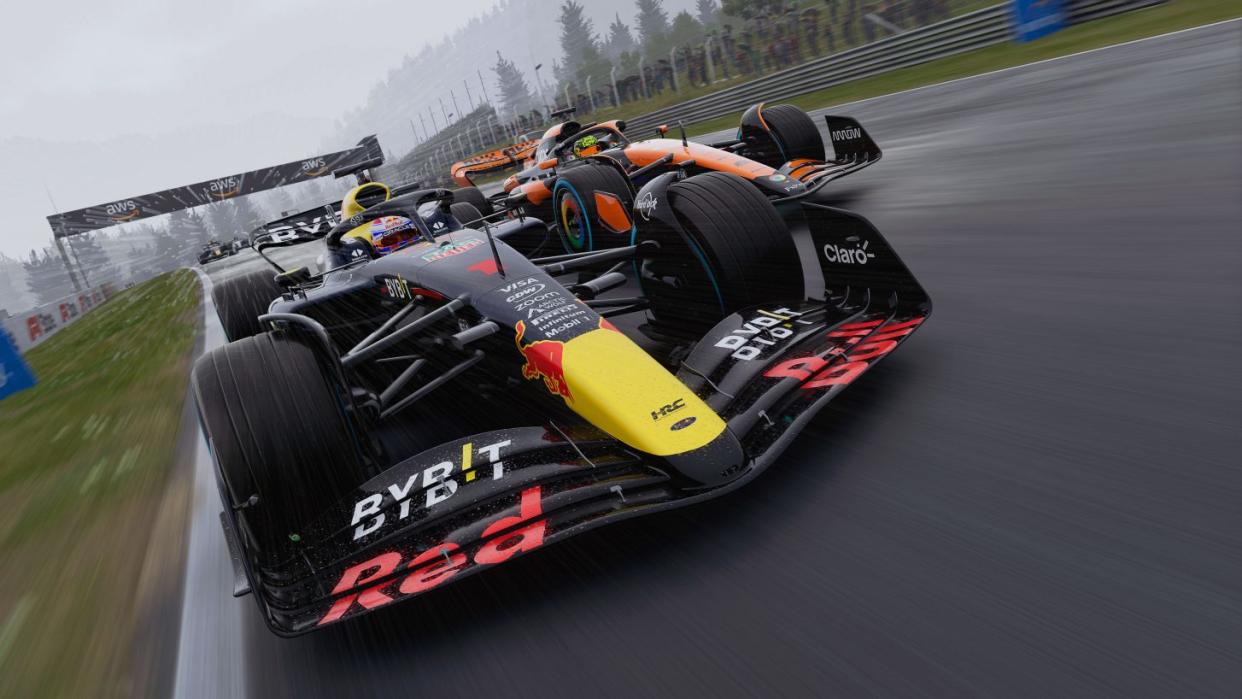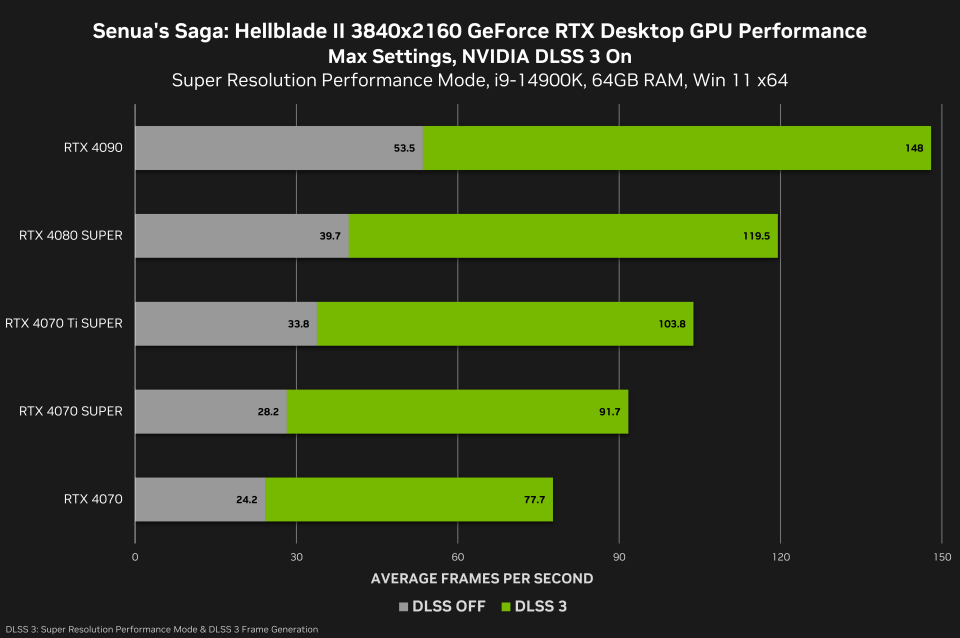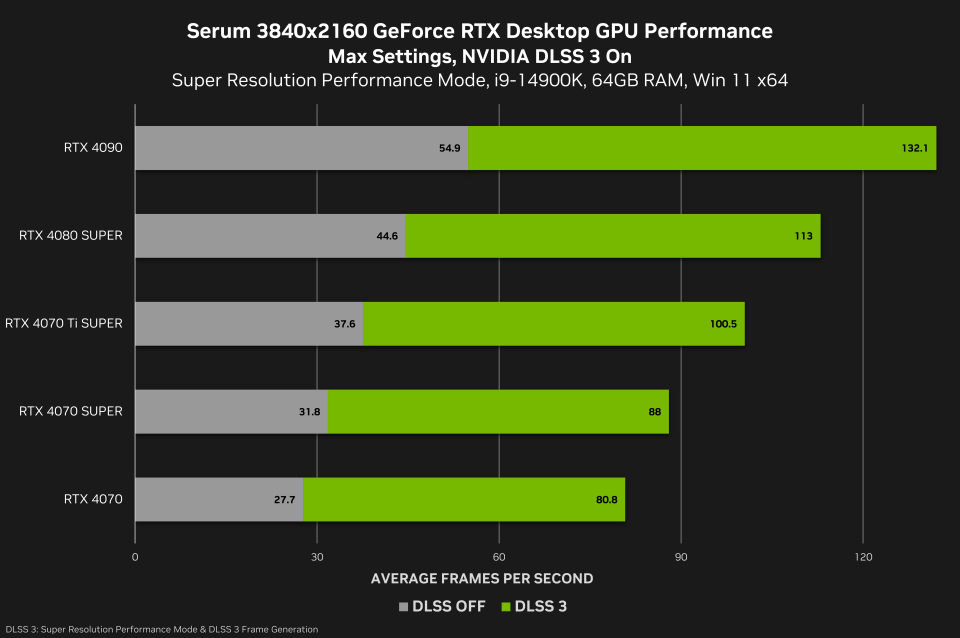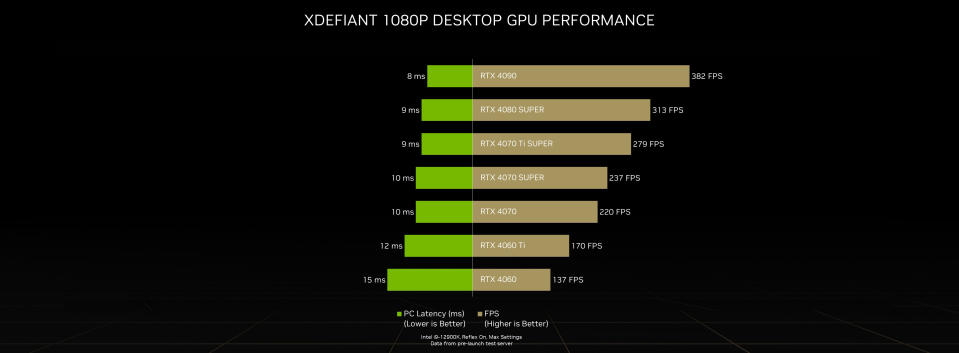Star Citizen gets DLSS and Vulkan support, as new Nvidia driver adds support for F1 24, Hellblade 2, and more

Nvidia announced a new game-ready driver that adds support for several new games and eleven new G-Sync compatible monitors. The 555.85 drivers add support for EA Sports' F1 24, Senua's Saga: Hellblade II, Serum, and Ubisoft's XDefiant free-to-play shooter. Nvidia also announced new game integrations with DLSS, one of which includes Star Citizen, which now boasts DLSS 2 upscaling and Vulkan support in the latest Alpha 3.23 update.
That's a big jump in driver versions, incidentally. Nvidia does this on occasion, often signifying a more significant overhaul of some of the underlying software. The previous driver release was 552.44, which came out May 9, an update to the 552.22 drivers from mid-April. We've been on 551/552 drivers from Nvidia since the start of 2024, but now the version jumped up to 555. Perhaps that's just the mid-year bump, though there are quite a few updates to discuss this round.
F1 24 is the latest iteration of EA Sport's Formula 1 game. The new title represents the most extensive update to the game since F1 2016. Not only are there new cars to drive, but the handling model has been reworked to provide a more realistic driving experience. Suspension has been updated to provide different driving behavior under various steering inputs. Tire degradation has been massively overhauled to behave more like real F1 cars, changing grip levels and wear characteristics depending on the environment and load on the tires. Aerodynamics has also been updated to incorporate fluid dynamics, leading to changing grip levels depending on how closely a driver is chasing another car in its "dirty air." F1 24 launches on May 28th, sporting Nvidia's DLSS 3 upscaling and frame generation technology, DLAA, Reflex, and ray tracing graphics.
Sensua's Saga: Hellblade 2 is the sequel to the award-winning Hellblade: Sensua's Sacrifice. Hellblade 2's story continues where Hellblade left off, showing her journey of survival in Iceland during the Viking era. The game leverages Epic's latest Unreal Engine 5, with impressive-looking visuals from top to bottom. Hellblade 2 launches today, featuring DLSS 3 upscaling, frame generation, and Nvidia Reflex technology.
Serum also utilizes Unreal Engine 5. It's a survival-horror game focused entirely on time. A timer on your arm decides if you live and die, and your goal is to fight through all obstacles in your way to find a special potion called Serum that will replenish your time. The game enters early access on May 23, with day-one support for DLSS 3 upcaling and frame generation, DLAA, and Reflex.
Last in the list of game ready options for this driver, Ubisoft's XDefiant is a brand new free-to-play competitive first-person shooter. The game takes inspiration from numerous outgoing shooter games, featuring fast-paced gunplay mixed with special character abilities. The game has teams of six with different factions to diversify the gameplay. XDefiant launches today featuring Nvidia Reflex technology to reduce latency.
Additional DLSS Game Integrations
On top of the various games listed above with DLSS support, Nvidia also announced several more games that have recently been updated to incorporate DLSS. Wuthering Waves launches on May 22 with DLSS 2 upscaling, Ships at Sea also has DLSS 2 and comes out on May 23.
One of the bigger announcements is that Star Citizen's DLSS 2 update is now available with the game's new Alpha 3.23 update, which is the largest patch the game has seen since Alpha 3.0 several years back. Along with DLSS 2 upscaling, the game now has Vulkan support, which will replace Star Citizen's outgoing DX11 implementation in the near future. Vulkan should deliver superior multi-threaded performance, which is crucially important for the scope and scale of the game. However, Vulkan is only in beta right now and the multi-threaded enhancements are not yet available and will be integrated in future updates.
Game performance, according to Nvidia



Nvidia also showed several performance graphs of most of the above games, including performance uplifts with DLSS 3 upscaling and frame generation in Hellblade 2. Nvidia's RTX 4090 only manages 53.5 FPS at 4K maximum settings with DLSS off, but with DLSS 3 upscaling (4x performance mode) and frame generation, frame rates triple to 149 FPS. Similar effects are seen on other RTX 40-series GPUs.
Serum shows very similar performance results, not too surprising as both games are running on Unreal Engine 5. Nvidia's RTX 4090 at 4K max settings achieves just 54.9 FPS without DLSS, but with DLSS 3 upscaling and framegen, that almost triples to 132.1 FPS. Similar benefits are also shown on Nvidia's less potent 40-series GPUs and at lower resolutions.
XDefiant is by far the lightest game out of the bunch. Nvidia reports that its RTX 4090 can achieve nearly 400 FPS at 1080p ultra settings, with just 8ms of latency enabled by Reflex. Other 40-series GPUs achieve triple-digit frame rates as well — even the lowest tier RTX 4060 reportedly achieves 137 FPS average in the game (15ms latency), while the RTX 4070 achieves 237 FPS (10ms of latency).
New G-Sync Compatible Monitors
Wrapping up today's Nvidia announcements, it showcased 11 new G-Sync-compatible displays that are all supported by the latest driver update. These include ultra-high refresh rate 1080p panels from Asus and LG, as well as three new OLED offerings from both manufacturers. The LG 32GS95UE is also supported, which is the world's first OLED display to feature dual-resolution support, enabling users to switch between 4K 240Hz and 1080p 480Hz with the press of a button.
Three bugs are squashed in Nvidia's latest driver update as well: Tekken 8 no longer randomly crashes on GTX 10-series graphics cards and Horizon Forbidden West Complete Edition no longer succumbs to low GPU utilization issues when running Reflex in "On + Boost" mode. Finally, a bug was fixed in Blender where motion blur would render incorrectly on some Nvidia GPU architectures.

